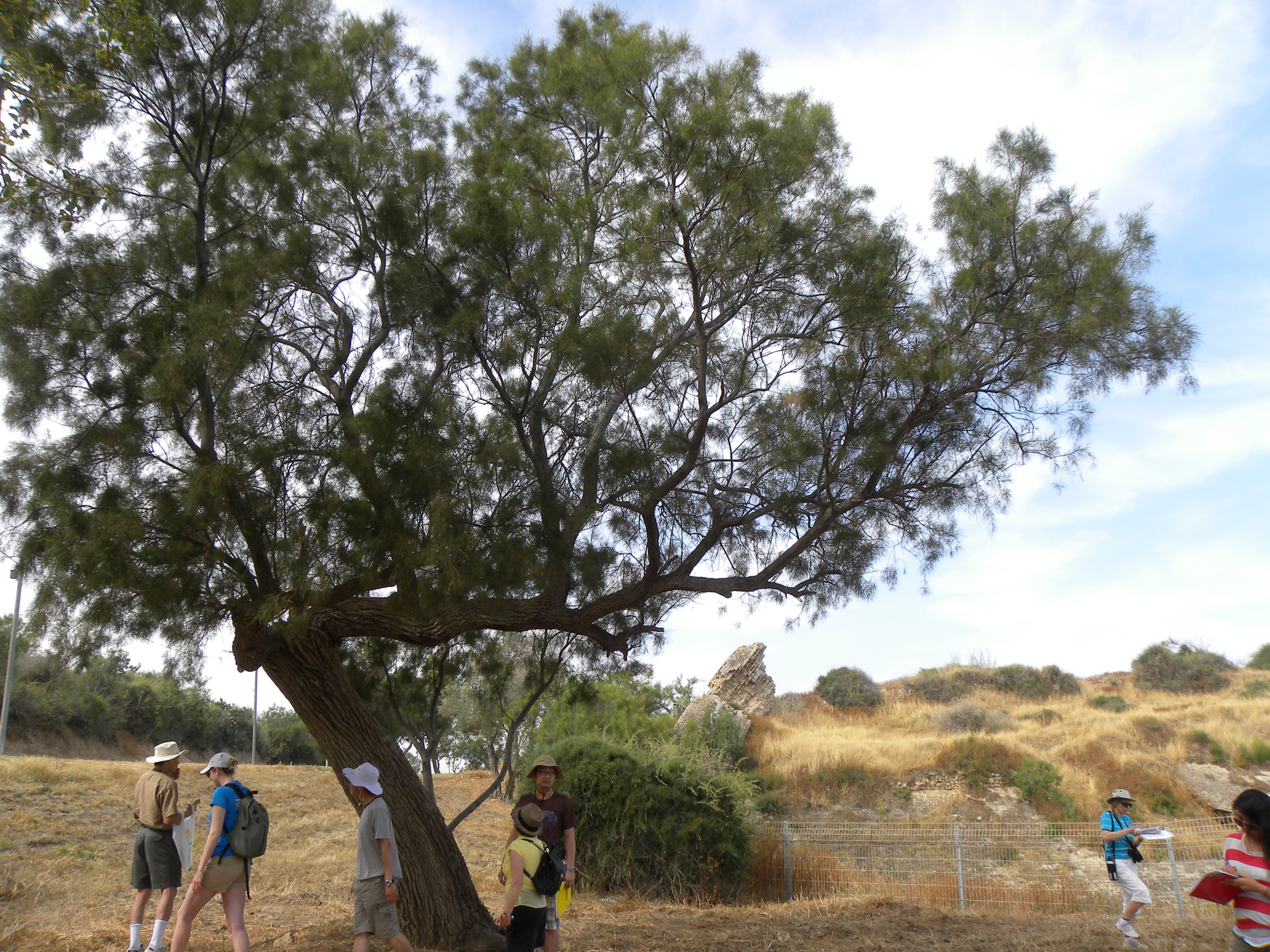Finding Marah

Finding Marah
Three days after crossing the Red Sea at Pi Hahiroth the Israelites camped at Marah. The water there was not to their liking. It was no doubt rain water from surface sources with a very low mineral content. The Israelites were accustomed to drinking Nile river water, which has a very high mineral content primarily as chlorides of sodium and potassium, as well as magnesium, between 33 and 44 mg/li (1). Anyone who has tasted rainwater from off a rock pool in the desert can attest to its potablility as well as its unpleasant, if not bitter, taste due primarily to the low mineral content. At any rate they complained to Moses and being knowledgeable in the ways of the desert, after 40 years there with his father in law, you would expect he would know what to do about it. We know he did not know however, because he cried out to the LORD. The Lord directed him to cut branches most likely from the Tamarisk tree, which the Lord pointed out to him and put them in the water. Tamarisk trees are common in the region. Known also as Salt Cedar they are associated with Manna. (3) They are usually encrusted with salt secretions. To reach a level of only 4 mg, which would be about the level of chloride (primarily as sodium) of DASANI® drinking water, would not be particularly difficult. I’m not sure if he taste tested it, or if the Lord simply told him how much to add but apparently he got it right and satisfied the Israelites. The Lord was testing the Israelites there as noted by Moses and I think they failed the test. It was a good learning experience for them at any rate, namely that G_d could provide for their needs and even their tastes in an inhospitable environment, but they would need to listen to Him, and do what is right in His eyes by diligently following His commandments and statutes. If they did so then he would protect them from the diseases of Egypt.
After so many major earthquakes in the last three Millennia it may not be possible to find Marah. I would suggest however that a three days journey into the Mountain wilderness of Shur should be marked out and then, after a rain, reflective pools be assessed by aircraft. The pools which have Tamarisk growing nearby would be the ones likely to be the original Marah. The wilderness of Shur is per scripture exiting from Pi hahiroth, which would be east. It’s a lot easier to go south along the eastern border of the Red Sea and that may be what exiting meant since they were headed to Midian. We see from Etham however that a wilderness is mountainous.
1. Characterization of Chemical Water Quality in the Nile River, Egypt Int. J. Pure App. Biosci. 2 (3): 35-53 (2014)
2. DASANI® combines filtration with added minerals to create a fresh, clean, and premium tasting water that is pure and delicious. DASANI® uses reverse osmosis filtration to remove impurities before enhancing the water with a special blend of minerals for the pure, crisp, invigorating taste that's delightfully DASANI®. Popular bottled water brand Dasani, for example, lists magnesium sulfate, potassium chloride, and salt alongside purified water on its Nutrition Facts label.
3. The genus Tamarix (tamarisk, salt cedar) is composed of about 50–60 species of flowering plants in the family Tamaricaceae, native to drier areas of Eurasia and Africa.[2] The generic name originated in Latin and may refer to the Tamaris River in Hispania Tarraconensis (Spain).wikipedia